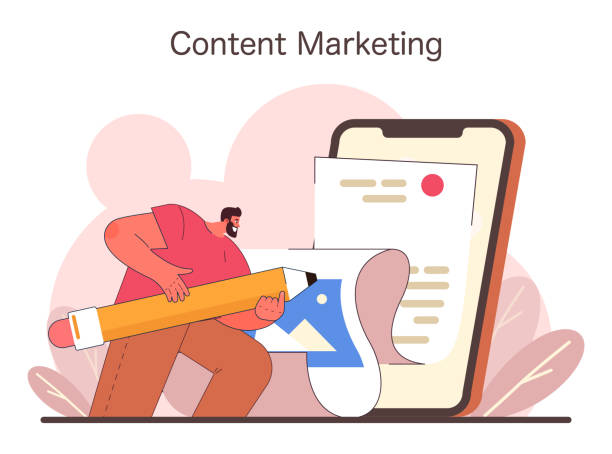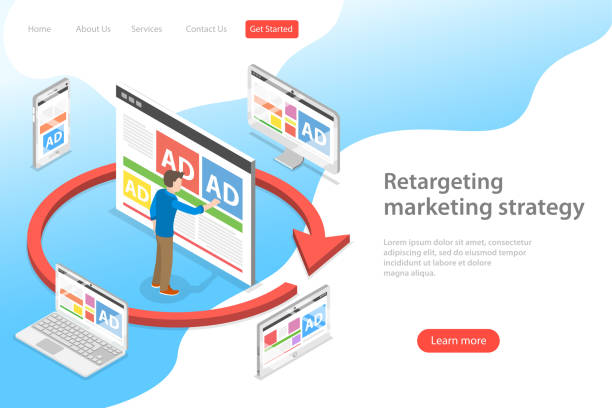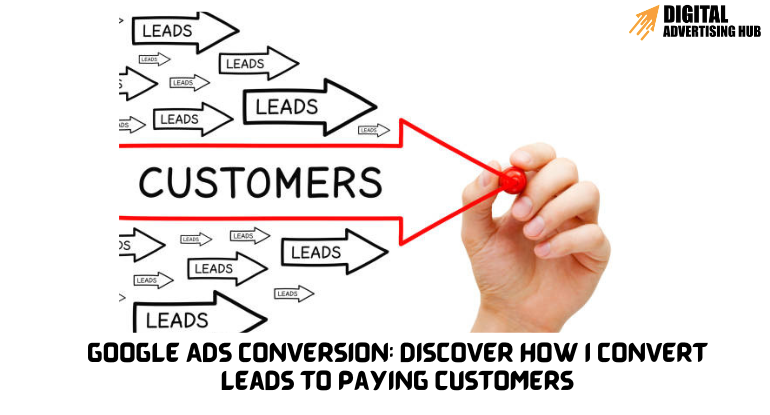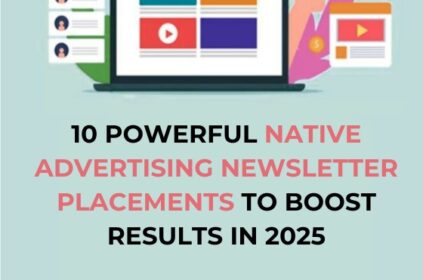You have worked hard to use Google Ads to generate leads. It is time to enjoy the benefits now. But what steps do you take to convert those prospects into paying customers?
Businesses that prioritize converting their leads to paying customers can experience significant benefits, including increased revenue, improved return on investment (ROI), and reduced marketing costs
In my previous post, I discussed 6 effective Google Ads strategies for generating leads. The next important step in the digital marketing process is converting those leads into paying customers. As a seasoned digital marketing expert, I have seen firsthand the power of strategic lead conversion.
In this comprehensive article, I will share valuable insights and practical tips to help you maximize your conversion rates and achieve your business goals. By implementing these strategies, you can turn potential customers into loyal advocates and drive sustainable growth. Stay tuned!
What Are the Google Ads Conversion Best Practices?
To fully utilize your website’s potential and convert visitors into clients, conversion rate optimization is important. You can improve your landing pages, calls to action, and forms to boost conversions and increase income by putting these best practices into effect.
#1. Optimization of Landing Pages
Your landing page should load rapidly and have one main objective. Steer clear of clutter and distractions that might confuse guests.
Use impactful headlines and compelling copy. Your headline should draw the visitor in and express your offer’s value proposition in a clear and concise manner. Persuasive writing should emphasize the advantages of performing the desired action.
In addition, your CTA should be visually visible and easy to discover. Use a compelling action verb (such as “Sign Up,” “Download Now”) and make sure to make apparent why doing so would be beneficial.
Try out multiple versions of your landing page to see which components work best. Try a variety of headlines, calls to action, graphics, and layouts to evaluate what appeals to your audience the most.
#2. Design Effective Calls-to-Action (CTA)
Clearly display your call to action (CTA) above the fold on the page. Make use of a legible typeface and a contrasting color. Use powerful action verbs and obvious advantages. Your call to action should be clear and persuasive. Make use of powerful action verbs (such as “Buy Now,” “Learn More”) and make sure you explain the advantages of doing the action.
Create a sense of urgency or scarcity. Adding a sense of urgency or scarcity can encourage visitors to take action. For example, you could offer a limited-time discount or a limited number of products available.
#3. Lead Form Optimization
Forms should be brief and easy to use. Long and complicated forms may discourage users from filling them out. Make sure your forms are as brief as possible and only include the data that is necessary.
Progressive profiling is a technique that gradually gathers more data. Progressive profiling is a useful tool for gathering more information gradually, as opposed to requesting all of your information at once. By doing this, you may cultivate relationships with leads and prevent them from being inundated with information all at once.
Provide discounts or incentives for filling out forms. Offering rewards or savings might entice people to fill out your forms. You may provide a promo code, a free trial, or a downloaded resource, for instance.
The Importance of Lead Nurturing

Developing a relationship with potential consumers over time is a strategic activity known as lead nurturing. This is important in Google Ads conversion strategy. You can raise the possibility that they will become paying customers by offering insightful material, tailored communications, and a satisfying experience.
Divide Up Your Leads
Assume you own a digital marketing company that focuses on serving small companies. One way to efficiently nurture your leads would be to group them according to criteria such as:
• Industry: Segment leaders include technology, retail, and healthcare.
• Business size: Divide up leaders into segments according to how big, medium, or tiny their businesses are.
• Marketing objectives: Divide up leads according to their marketing objectives, which might include raising sales, generating leads, or improving website traffic.
By segmenting your leads, you can tailor your lead nurturing efforts to their specific needs and interests. For example, you could send content offers related to SEO best practices to leads in the healthcare industry, while sending content offers related to social media marketing to leads in the retail industry.
Creating a Personalized Lead Nurturing Journey
After segmenting your leads, you can create a customized lead nurturing program. This entails creating a sequence of emails, content offerings, and other interactions that provide value and advance prospects toward Google Ads conversion.
#1. Describe your ideal customer: Make a thorough profile of your ideal client, including their objectives, interests, problems, and demographics. Your buyer persona may be a small business owner who is having trouble finding internet clients, for instance.
#2. Determine important benchmarks: Identify the critical phases of your buyer’s journey, including contemplation, decision-making, awareness, and interest. For instance, if a lead visits your website but does not download any content, they may be in the awareness stage.
#3. Provide material that addresses every phase: Provide content that speaks to customers’ interests and needs at every point of the buying process. For instance, you might send leads in the awareness stage a blog article about the value of SEO and leads in the consideration stage a case study about an effective SEO campaign.
How to Use Email Marketing to Build Relationships
One effective technique for lead nurturing is email marketing. You can stay at the top of prospects’ minds and gain their confidence by consistently delivering insightful emails.
1. Send customized emails: Based on a lead’s interests and behavior, send customized emails using email marketing automation. For instance, you may notify a lead who downloaded an earlier content offer on the subject of social media marketing via email about a webinar on the subject.
2. Offer useful content Provide informative materials like webinars, e-books, blog entries, and case studies. Sending an email with a link to a blog article about the newest SEO trends or a webinar on how to design successful social media campaigns are two examples of what you may do.
3. Employ a regular email calendar: To maintain lead engagement, create a regular email calendar. You can, for instance, send out a weekly email with updates and news from the business in addition to monthly content offers.
How to Utilize Content Marketing to Educate and Engage Leads

Another efficient strategy for nurturing leads is content marketing. You can establish yourself as an authority in your industry by producing top-notch content that speaks to their needs and interests.
#1. Provide material that speaks to the problems of your target audience: Determine the problems that your intended audience is facing and provide content that provides answers. For instance, you may write a blog article about efficient lead generation techniques if your target audience is having trouble generating leads online.
#2. Employ a range of content types: Try out several content formats, including webinars, infographics, blogs, and videos. For instance, you may make an infographic on the newest social media trends, a blog article about the advantages of SEO, and a webinar about optimizing your website for conversions.
#3. Use email marketing and social media to promote your content: Send out your material via email marketing campaigns and social media. You may, for instance, link to your content offers in your email newsletters and promote your blog entries on LinkedIn and Twitter.
Leveraging Social Media to Connect with Leads
Social media can be a useful resource for establishing connections and interacting with leads. Through active audience participation on social media, you can raise brand recognition and boost transactions.
#1. Establish a social media presence on relevant channels: Determine which channels are most frequented by members of your target demographic. For instance, you may want to concentrate on Facebook and LinkedIn if small company owners are your target demographics.
#2. Distribute worthwhile content: Post links to your material and other pertinent industry news and insights on social media. For instance, you might publish articles from other industry experts as well as your blog entries, infographics, and webinars on social media.
#3. Engage with your audience: Respond to comments and messages, and participate in relevant discussions. For example, you could join industry groups on LinkedIn and participate in conversations about relevant topics.
How to Use Retargeting to Reach Qualified Leads

Remarketing, or retargeting, is an effective strategy that lets you re-engage with visitors who weren’t able to convert at first. You can increase the probability that they will return to your website and complete a transaction by displaying them with customized advertisements based on their past browsing activity.
What’s Retargeting?
Retargeting is the practice of tracking a visitor’s online activities with cookies and subsequently showing them advertisements on other websites. By doing this, you may connect with prospective clients who have expressed interest in your goods or services but may have abandoned your website without making a purchase.
Retargeting can be used, for instance, to display product advertisements to visitors who add items to their cart then abandon the transaction on other websites. This might serve to remind them of the item and entice them to visit your website once again to finish their purchase.
Creating Effective Retargeting Campaigns
To create effective retargeting campaigns, you need to:
#1. Define your target audience: Determine which visitors to target again by looking at their demographics, interests, or behavior. For instance, you could wish to retarget users who have joined your email list or seen particular product pages on your website.
#2. Make eye-catching advertisements: Create advertisements that appeal to the visitor’s past browsing habits and entice them back to your website. Make sure your language and images are compelling and emphasize the advantages of your offerings.
#3. Establish a budget: Choose the daily or monthly amount you are prepared to spend on your retargeting marketing. When determining your budget, take into account your target market, the competition, and your overall marketing objectives.
#4. Track and optimize: Keep an eye on how well your retargeting efforts are performing and tweak as necessary to attain better outcomes. Track parameters like cost per acquisition, conversion rate, and click-through rate with analytics tools.
Targeting Specific Audiences Based on Their Online Behavior

You can target specific audiences based on their online behavior, such as:
#1. Website visitors: You can retarget those who have visited particular pages on your website, such your blog entries or product pages.
#2. Cart abandoners: Retarget users who added products to their cart but abandoned them. This strategy works especially well for making up lost sales.
#3. Custom audiences: Assemble audiences that meet predetermined requirements, including email subscribers, site visitors who have viewed a certain video, or visitors who have downloaded a certain piece of information.
Retargeting can be a powerful tool for re-engaging website visitors who didn’t convert. By showing them targeted ads, you can remind them of your products or services and encourage them to return to your site.
By using retargeting effectively, you can increase your website traffic, generate more leads, and boost your sales.
The Role of Analytics in Conversion Optimization
Using analytics tools to monitor and evaluate important data is crucial if you want to evaluate and enhance your lead Google Ads conversion efforts.
You can learn a lot about the success of your marketing initiatives and pinpoint areas that need work by monitoring and evaluating lead behavior. To improve Google Ads conversions, you may use this data to enhance your landing pages, website, and lead nurturing campaigns.
Key Metrics to Monitor
Some of the key metrics to monitor include:
1. Conversion rate: The percentage of visitors who complete a desired action, such as filling out a form or making a purchase.
2. Bounce rate: The percentage of visitors who leave your website after viewing only one page.
3. Time on site: The average amount of time visitors spends on your website.
4. Click-through rate (CTR): The percentage of people who click on a link or ad.

5. Lead generation rate: The number of leads generated per visitor.
Using Analytics Tools to Identify Areas for Improvement
Analytics tools can help you identify areas where you can improve your lead conversion efforts. For example, if you notice a high bounce rate on a particular landing page, you can analyze the page’s content, design, and call-to-action to identify potential issues.
Here are some popular analytics tools that can help you identify areas for improvement:
1. Google Analytics: This robust and free tool provides extensive website analytics, including tracking Google ads conversions, traffic sources, and user behavior
2. Hotjar: A heatmap tool that helps you see where users click, scroll, and spend the most time on your website by visualizing their activity.
3. Crazy Egg: Another heatmap tool that offers scroll maps, click tracking, and insights comparable to those of Hotjar.
4. Optimizely: An A/B testing tool that lets you try out several iterations of your website to see which components work the best.
5. Mixpanel: An event-based analytics platform that monitors user behavior and aids in deciphering user paths across your website.
By leveraging analytics tools and data-driven insights, you can make informed decisions to optimize your website and increase your lead conversion rates.
Setting Goals and Tracking Progress
To measure the effectiveness of your Google Ads conversion efforts, it’s important to set clear goals and track your progress. This will help you stay focused and identify areas where you need to make improvements.
Some examples of goals you might set include:
- Increasing your website’s conversion rate by 20%
- Generating 100 new leads per month
- Reducing your site’s bounce rate by 10%
By tracking your progress towards these goals, you can identify areas where you need to make adjustments and ensure that your Google Ads conversion efforts are effective.
Conclusion
In this post, we’ve explored the essential Google Ads conversion strategies for turning leads into customers in online advertising. By implementing these techniques, you can maximize your conversion rates and achieve your business goals.
By following these guidelines and continuously refining your approach, you can effectively convert leads into customers and drive sustainable growth for your business.
Additional resources:
- Conversion Tracking 101: An Ultimate Guide to Unlocking Hidden Profits in Your Google Ads Campaigns
- 7 Landing Page Mistakes Costing You Conversions and How to Avoid Them
- The Complete Guide to a Good Conversion Rate and How to Improve It
I hope this post has been valuable. If you have any questions or would like to discuss your specific needs, feel free to leave a comment below.










